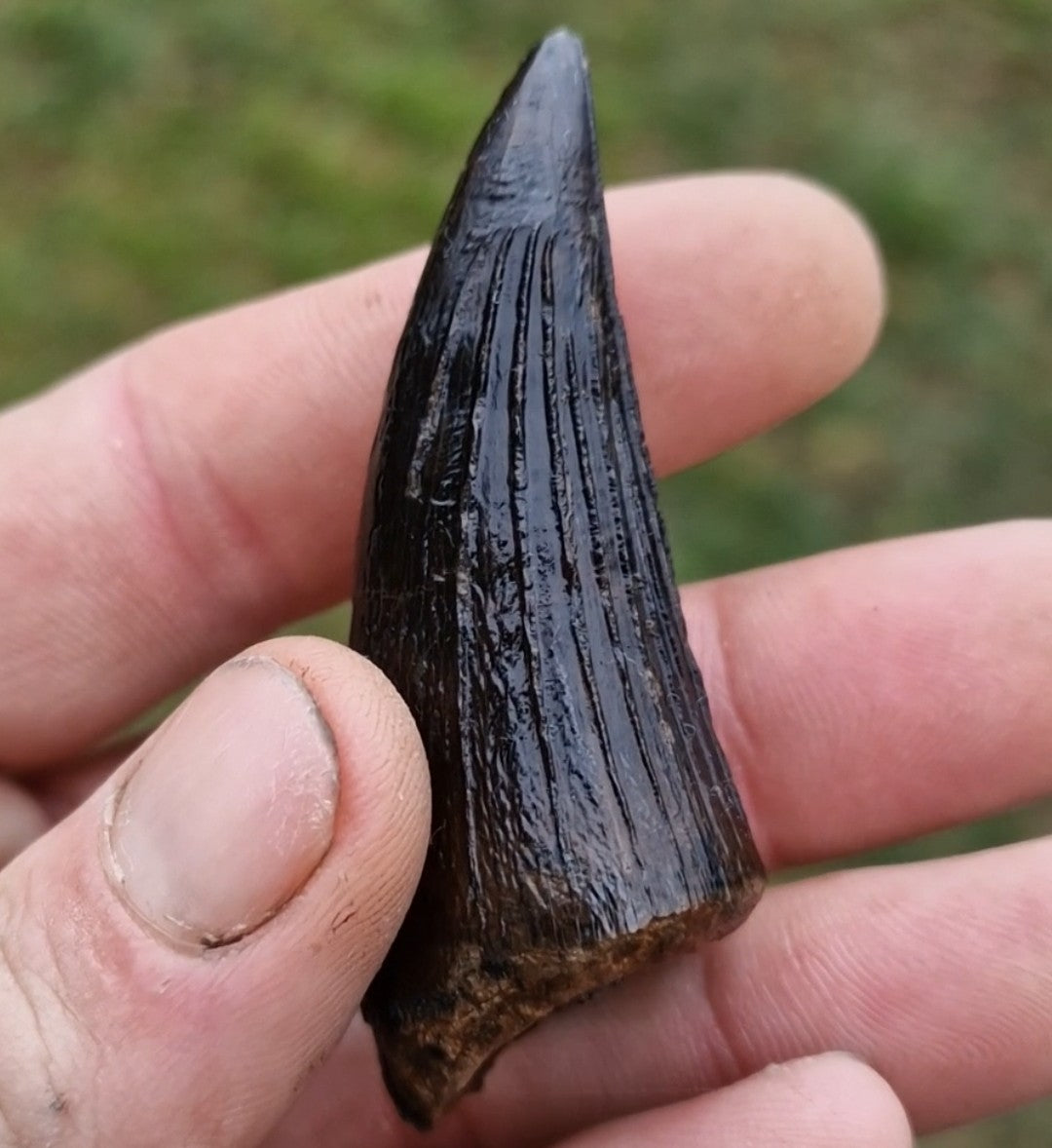
What will you find?
You can absolutely find anything. Every tide rewrites the beach, uncovering treasures hidden for millions of years. One day it’s smooth pebbles and sand, the next it might reveal the tooth of a Jurassic giant. That’s the magic of the Jurassic Coast - every walk is different, every visit an adventure.
Imagine standing where the sea has just pulled back, spotting the glint of fossil bone or the spiral of an ammonite. It’s not just something you see in museums - it’s there, waiting in the sand for someone with a sharp eye to find it.
Join us on a guided trip and you’ll learn where to look, what to spot, and how to hold a piece of deep time in your hands. Every outing is a chance to uncover something remarkable - and maybe, the next incredible discovery will be yours.
Pliosaurus kevani - The Jurassic Coast Giant
Pliosaurus kevani is one of the most impressive fossil discoveries ever made along Dorset’s Jurassic Coast. This colossal marine reptile lived around 150 million years ago, during the Late Jurassic, when much of southern England was covered by a warm, shallow sea. It was an apex predator, with a skull nearly two metres long and jaws lined with distinctive subtrihedral teeth - slightly flattened and ridged – perfectly evolved for seizing and slicing through large prey.
The fossil remains were recovered from the Kimmeridge Clay at Osmington Bay, a stretch of coastline that has yielded some of the most significant marine reptile finds in the world. The skull, catalogued as DORCM G.13,675, is one of the most complete pliosaur skulls ever discovered in Britain. It was painstakingly prepared after being found in multiple blocks of cliff fall, some weighing as much as 60 kilograms.
Although the postcranial skeleton is missing, scientists have been able to estimate its overall size by comparing the skull with those of related pliosaurs. These comparisons suggest Pliosaurus kevani reached between 9 and 11 metres in length and may have weighed more than 12 tonnes - a true giant of the Jurassic seas. Biomechanical studies of the skull have revealed that its bite force was among the strongest of any animal known from this time, reaching up to 27,000 newtons in the back of the jaws.
The story of its discovery is as remarkable as the fossil itself. The first pieces of the snout were spotted on the beach by local fossil hunter Phil Jacobs, who realised their importance and ensured they were reported and recovered properly. Over the years, further pieces were collected from the cliffs and painstakingly assembled into the incredible specimen we see today.
Other collectors have also played an important role in revealing the pliosaurs of Dorset. Patrick Clark has uncovered a number of fine pliosaur specimens from the same coastal exposures, helping to build a clearer picture of these fearsome predators and sharing his finds with museums and researchers.
The nearby Etches Collection Museum in Kimmeridge displays further extraordinary marine reptiles from the same rock layers, including large and near-complete pliosaur skeletons that give a fuller picture of these animals’ size and power. The preservation of many of these fossils, from teeth still set into their jaws to delicate skull features, shows just how exceptional the Kimmeridge Clay is as a fossil site.
Pliosaurus kevani isn’t just another fossil - it’s a reminder that the seas of the Jurassic Coast were once ruled by enormous predators. It stands as one of the greatest treasures of Dorset’s geological heritage, inspiring both scientists and anyone who walks these beaches today.